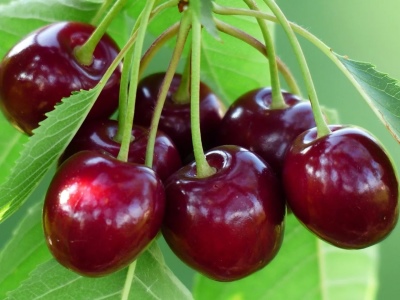
- Authors: South Ural Research Institute of Horticulture and Potato Growing
- Barrel type: wood
- Growth type: medium-sized
- Crown: medium thick, flat-round
- Flowering and fruiting type: on annual shoots
- Fruit size: large
- Fruit shape: rounded
- Fruit color: red
- Fruit weight, g: 5
- Pulp color : Red
The success of a gardener is a bountiful harvest of high quality. To achieve such results, it is necessary to competently approach the choice of a tree and carefully care for the culture. Cherry Ural sweet cherry demonstrates excellent yield indicators and unpretentious care, for which it is appreciated by gardeners.
Breeding history
Experienced breeders from the Urals were engaged in obtaining the variety, who managed to develop a species resistant to not the most pleasant weather conditions. The registration of a new cherry variety took place in 1959.
Description of the variety
Ural sweet cherry is a medium-sized variety, it is resistant to unpleasant weather conditions and frosts, good survival rate in the ground and high yield rates.
Specifications:
- the tree is 3 m high;
- the crown is medium in density, flat-round;
- large white or pink flowers appear on annual shoots.
Cherry takes root well in the cold and changeable Ural climate, for which it is appreciated by the gardeners of the region. The variety thrives in moist soils and in lighted areas.
Fruit characteristics
The Ural sweet cherry pleases gardeners with large round fruits, near the seam of which there is a slight concavity. In diameter, ripe cherries reach an indicator of 17 mm and have a rich ruby color.
Taste qualities
The flesh of a cherry is of medium density, but juicy and tastes like a sweet cherry. The fruit tastes sweet and sour, pleasant. The difference between the Ural sweet cherry is the easy separation of the bone from the pulp, which is also regarded by gardeners as an exceptional advantage. In the process of formation, the fruits do not crack and are perfectly retained on the stalks.
Ripening and fruiting
The first cherry inflorescences give out towards the end of spring, when stable warm weather sets in. Drupes are formed almost immediately after the appearance of flowers, fruits ripen by the end of July. Gardeners are advised to start harvesting when the cherry skin acquires a bright ruby hue.

Yield
The Ural sweet cherry has a high yield. On average, it is possible to collect up to 7 kg of fruits from a tree. In rare cases, cherries are ready to produce up to 15 kg of harvest. The highest yield occurs in the period of 4-16 years.
Self-fertility and the need for pollinators
Cherries are partially self-fertile, so they need pollinators that have a similar flowering period. For example, Molodezhnaya, Vladimirskaya, Turgenevka.
Landing
The right choice of a place for planting a tree will help to achieve a good harvest. The seedlings will feel good and will quickly take root in sunny areas where the groundwater runs deep.It is better to plant trees on a hill so that in spring water does not accumulate under them.
Cherries are planted in the spring, before the first leaves appear on the tree. If you plant a variety in the fall, then there is a high probability that the seedling will not take root and die.


Growing and care
In addition to proper planting, you also need to take care of proper care of the plant. The main recommendations here are as follows.
- After planting, the seedling needs regular watering. It is better to bring in large quantities of settled warm water.
- The root soil should be periodically loosened to reduce the number of weeds and saturate the soil with oxygen in order to strengthen the root system.
- Dried or too long branches should be cut with a garden pruner or other reliable tool. This will help channel the cherry's energies into the formation of large and sweet fruits.
- In autumn, when the tree goes into hibernation, it is recommended to fertilize the soil with potassium and phosphorus compounds in order to compensate for the lack of nutrients and strengthen the plant's immunity.
- Once every 4 months, gardeners are advised to fertilize the soil with manure or compost. Organic formulations will accelerate the growth of the seedling and help to achieve high yields.
Additionally, you can feed the tree in the spring by adding fertilizing, which contains nitrogen.


Disease and pest resistance
The Ural cherry has a strong immunity, it is not afraid of aphids. However, the variety is easily exposed to coccomycosis, a fungal infection, the signs of which are:
- changing the color of the leaves from green to brown;
- falling foliage;
- drying of branches.
Preventive action can help prevent the risk of infection. The tree should be treated with fungicides before it begins to bloom and bear fruit.
Requirements for soil and climatic conditions
Cherry tolerates cold and frost well, therefore it is in demand in the Ural region. However, the plant needs shelter for the winter.
































































